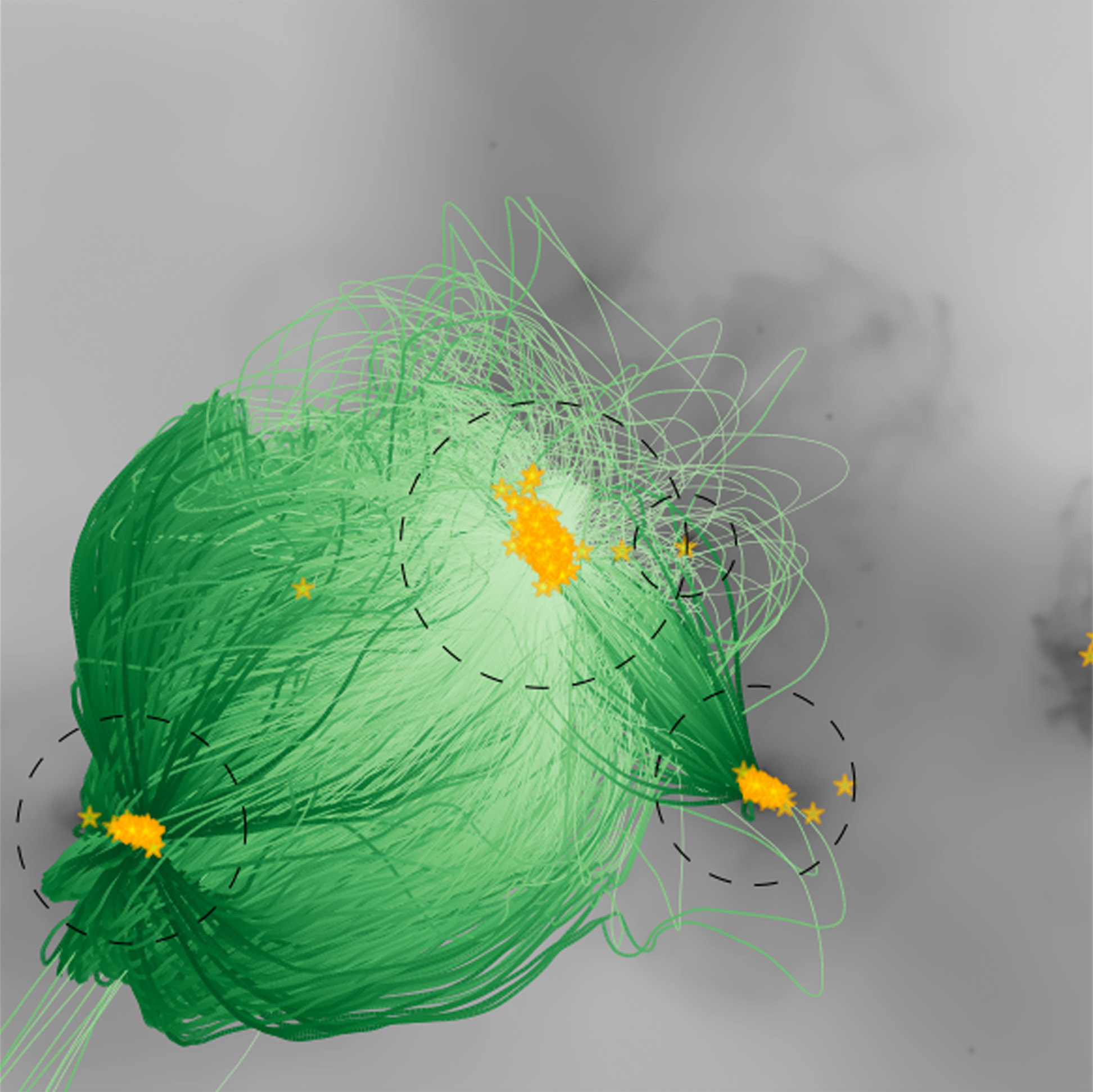
EVERY one of us contains alien atoms that originated in a galaxy far, far away, a new study suggests.
Scientists have discovered that up to half the matter making up our galaxy, the Milky Way, used to belong to other clusters of stars.
The sun, the Earth, and even our own bodies probably contain a large proportion of this galaxy-hopping material, which migrated to our part of the universe across vast expanses of space.
Lead researcher Dr Daniel Angles-Alcazar, from Northwestern University in the US, said: “Given how much of the matter out of which we formed may have come from other galaxies, we could consider ourselves space travellers or extra-galactic immigrants.
“It is likely that much of the Milky Way’s matter was in other galaxies before it was kicked out by a powerful wind, travelled across inter-galactic space and eventually found its new home in the Milky Way.”
The findings are based on supercomputer simulations of galaxy formation so complex they required the equivalent of several million hours of continuous number crunching.
By tracking in detail flows of matter in the simulations, the team spotted signs of gassy material migrating from smaller galaxies to larger galaxies such as the Milky Way, where it coalesced to form stars.
The gas was blown across space by powerful “galactic winds” – streams of high-speed charged particles – over periods of several billion years.
Currently, the nearest large spiral galaxy to the Milky Way is Andromeda, which is an unimaginably distant 2.5 million light years away.
But the Milky Way is also surrounded by smaller “companion” galaxies such as the Magellanic Clouds, that are much closer.
Professor Claude-Andre Faucher-Giguere, also from Northwestern University, who co-authored the research published in the journal Monthly Notices of the Royal Astronomical Society, added: “This study transforms our understanding of how galaxies formed from the Big Bang.
“What this new mode implies is that up to one-half of the atoms around us – including in the solar system, on Earth and in each one of us – comes not from our own galaxy but from other galaxies, up to one million light years away.”
Galaxies were previously thought to have formed largely independently from the hot primeval gas filling the universe soon after the Big Bang, the mighty explosion that marked the dawn of creation.
Although some galaxies have been observed colliding or merging, most were believed to have retained their own identify.
Prof Faucher-Giguere said: “Our origins are much less local than we previously thought. This study gives us a sense of how things around us are connected to distant objects in the sky.”
The inter-galactic material is thought to be ejected by exploding stars before being carried through space on galactic winds.

Enjoy the convenience of having The Sunday Post delivered as a digital ePaper straight to your smartphone, tablet or computer.
Subscribe for only £5.49 a month and enjoy all the benefits of the printed paper as a digital replica.
Subscribe